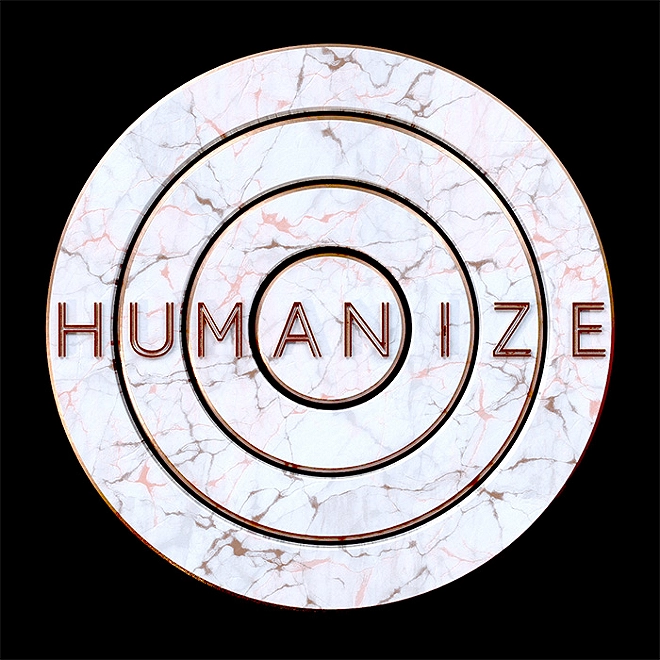Regulatory environment
How to be compliant on time?
Regulatory Watch Kaleidoscope
The unprecedented rhythm of regulatory developments, requires financial institutions to relentlessly look for new ways to carry out operations and manage risks. Regulatory Watch is now a key activity, enabling Board of Directors and Executives to anticipate their challenges and opportunities. Our solution allows to have a complete view on your regulatory impacts and anticipate changes for your organization.
AIFMD (Alternative Investment Fund Manager Directive)
The Alternative Investment Fund Managers Directive (AIFMD) is no longer a distant set of requirements subject to ongoing negotiation. The European Commission’s detailed ‘Level 2 Regulation’ has settled the rules for compliance with this new, game-changing regulatory regime.
AML / AMLD4 (Anti-Money Laundering Directive)
Deloitte Luxembourg, AML Center of Excellence of Deloitte for Continental Europe, provides companies covered professionals with a broad range of services to help you navigate the complex, high-stakes environment of forensic & anti-money laundering and counter terrorist financing. Our service offering ranges from staff training up to C-level executives, advisory on AML procedures, assistance for AML section of CSSF application files, AML health check, KYC remediation projects.
Our practice has also developed a service of name screening in partnership with Fircosoft and Dow Jones Factiva named uComply designed to help covered professionals abide by their obligation of ongoing monitoring of their clientele.
Our AML professionals often speaks in conferences in Luxembourg and abroad and are available to steer workshop and identify areas of improvements for AML controls, or help companies solve difficult regulatory issues.
CMU (Capital Market Union)
Capital Markets Union is one of the principal pillars of the current European Commission. It aims to facilitate the creation of a single capital market across the EU and develop the availability of non-bank funding to the broader economy. It contrasts the varying US and EU models where bank financing plays only a minor role in the US but a major one in Europe. CMU will not take the form of a heavy programme of new legislation. It will review recent legislation for coherence and where necessary recommend adjustments. It will look at high quality securitisation, market access for SMEs, the functioning of ELTIFs, EuVeca and EuSEFs, and covered bonds. It will also look at impediments to cross border flows of investment and capital with a view to removing those that may be removed. In a second phase it should look at broader initiatives such as personal pension provision
CRD IV (Capital Requirements Directive)
As from 1 January 2014, the new regulatory framework (CRR/CRD IV) transposing the recommendation of the Basel Committee (Basel III) came into force. This new regulatory environment has been designed to mitigate the excess observed during the financial crisis and address weaknesses in prudential regulation, covering the following aspects:
- Increase the quality and the level of capital to reduce the pro-cyclicality effect;
- Reduce systemic risk and control the revenue distribution to shareholders ;
- Set-up liquidity standards aiming to enhance both short-term and long-term liquidity profile of financial institutions;
- Limit the bank’s capacity to leverage their activities.
The introduction of the CRD IV introduces additional constraints on financial institutions that leads to a modification of their balance sheet structures, induces a decrease of the financial institution's risk profile and put under pressure their performance.
CRS (Common Reporting Standard)
The Common Reporting Standard (“CRS”) for the automatic exchange of tax information is a single global standard for a financial institution’s collection of financial account information on account holders who are tax resident in another jurisdiction, to be reported to the financial institution’s local tax authorities, with a view to exchange this information automatically with the partner jurisdictions’ tax authorities on an annual basis. The CRS went live throughout the EU on 1 January 2016, will go live in the relation between the EU and Switzerland as from 1 January 2017, and with many more jurisdictions over the next couple of years.
Data privacy & Information Technology
Personal data, information technology and digital trust are critical components of any operation and key enablers for achieving business objectives. Our IT regulatory specialists assist our clients comply with a broad range of legislations and regulations, including data privacy (Luxembourg Law of 2 August 2002 and draft EU GDPR regulation), IT regulations of the financial sector (CSSF circulars 05/178, 12/544, 12/552, 13/554, 15/603, 15/611, etc.), legal archiving (Luxembourg Law of 25 July 2015), and digital trust (EU eIDAS regulation 910/2014 of 23 July 2014 and ETSI standards).
EMIR (European Market Infrastructure Regulation)
On 20 November 2014, the council of the European Union agreed to support a draft regulation, aimed at improving the transparency of securities financing operations. The draft proposal is considered to be the final piece of the regulatory framework around banking operations and should be considered together with a draft regulations on the structural reform of EU banks.
The agreed draft proposal would address concerns by the commission that reinforcing banking regulation could push an increasing number of activities to the shadow banking sector, notably Securities Financing Transactions (SFT) such as repurchase, reverse repurchase and securities lending.
The draft proposal will target all counterparties in these transactions, both financial (asset managers, funds, depot banks) and non-financial, and introduces measures in 3 fields:
- Reporting of SFT and collateral to trade repositories
- Transparency and disclosure towards investors
- Transparency and requirements around rehypothecation
The reporting requirements are expected to be very similar to the reporting requirements under EMIR. An overview of the status of EMIR and how it compares to the SFT regulation can be found in our webinar recording on EMIR/SFT regulation.
For more information, please read more on our Deloitte regulatory news alert: EU proposal to bring transparency to SFTs or the press release from the commission.
FATCA (Foreign Account Tax Compliance Act)
As is the case in many jurisdictions, Luxembourg opted to negotiate a Model 1 Intergovernmental Agreement (IGA) with the US, in order to transpose FATCA obligations under the form of automatic exchange of information through the Luxembourg tax authorities (the latter being in charge of transmitting this information to the US). FATCA is live, and a first automatic exchange of information towards the Luxembourg tax authorities, regarding the year 2014, was due on 31 August 2015 at the latest.
Luxembourg market players may now consider to carry out health checks in order to obtain comfort that compliance with the Luxembourg law transposing the IGA is achieved, or, as and when required, remediate possible implementation issues as soon as possible. Such checks are also a good occasion to make the link with upcoming CRS obligations, inspired by the FATCA Model 1 IGAs, and, for those market players having QI status, to obtain comfort as to the application of the new QI regime.
MiFID II (Market in Financial Instrument Directive)
After intense discussions, the European Parliament adopted the MiFID II directive and the regulation was adopted on 15 April 2014. By end-2017, all 28 EU member states will be on a level playing field need to have implemented the new legislation and the thousands of "investment firms" will need to be in compliance. The MiFID II package introduces a range of measures, which seek to address consequences identified weaknesses of MiFID I, and issues raised by the financial crisis, such as making financial markets more efficient, resilient and transparent, improving investor protection, as well as addressing commitments made by the G20 in Pittsburgh (2009) on these topics. This revision will have a significant impact on both business strategy and operational processes implemented by firms. Today, it is time for firms to understand the key areas of impact on their business and start to plan for change. Although the challenges for firms to implement changes may be significant, firms should also consider the opportunities the reforms offer and focus their activities accordingly.
PRIIPS / KIID (Packaged Retail and Insurance-based Investment Products / Key Investor Information Documents)
The PRIIPs directive, which was adopted in December 2014 and to become effective for non-UCITS as of 1 January 2017 aims to bring in line the same principles of investor disclosure that UCITS products have currently in place in the form of the Key Investor Information Document (KIID). The new Key Information Document (KID) will be 3 pages long and contains greater disclosure compared to the elements already foreseen in the UCITS KIID documents. UCITS funds will need to be compliant with the PRIIPS KID as of 1 January 2020.
Securities Financial Transactions regulation
The council of the European Union agreed on transparency rules regarding Securities Financing Transactions on 20 November 2014. The aim of this draft regulation is to enhance financial stability by ensuring that information on so-called securities financing transactions is efficiently reported to trade repositories and investors in collective investment undertakings. Improved transparency would prevent financial intermediaries, including banks, attempting to circumvent regulation by shifting parts of their activities to the less-regulated shadow banking sector.
Read more about the Securities Financial Transactions regulation
Solvency II / Omnibus
Solvency II is the new solvency regime for all EU insurers and reinsurers, which also covers the insurance operation of bancassurers. It aims to implement solvency requirements that better reflect the risks that companies face and deliver a supervisory system that is consistent across all member states.
SRB (Single Resolution Board) / BRRD (Bank Recovery and Resolution Directive)
The Bank Recovery and Resolution Directive 2014/59/EU (BRRD) published in the Official Journal on 12 June 2014 sets out new resolution rules for all EU banks.
The financial crisis illustrated the activities performed by financial institutions can be critical for the stability of the financial sector and the real economy (e.g. global systemically important financial institutions). In the light of those observations, the EU authorities have adopted a new regime to strengthen the Europe's banking sector and avoid the spillover effects for depositors and taxpayers arising from future financial crisis.
Through the BRRD, the EU authorities require financial institutions to prepare recovery plans to be activated in case of distress. In complement, the EU authorities have to ensure that all preventative steps are taken to deal with bank failure as well as any failing bank can be restructured and resolved in a way which preserves financial stability and protects taxpayers. To that end, EU authorities have received additional power and tools. Finally the financing for resolution of failing banks is ensured by the industry itself through the set-up of single resolution fund, in order to reach a level of at least 1% of covered deposits of all the institutions authorized in their territory by 31 December 2024.
SSM (Single Supervisory Mechanism)
The Single Supervisory Mechanism is the new system of banking supervision made of the ECB and national supervisory authorities with the objectives to deliver robust and consistent supervision. To achieve its objectives, the SSM strengthens the Supervisory Review and Evaluation Process (SREP) with the aim to embed a Forward looking supervision, be more quantitative than qualitative and harmonize the risk-based assessments. Therefore under the SSM, financial institutions have to adapt to a new regime, requiring proactively move that could lead to strategic advantage.
UCITS V (Undertakings for the Collective Investment of Transferable Securities)
UCITS V is the most recent evolution of the UCITS legal framework, and reinforces depositary liabilities along and beyond the lines of AIFMD. In addition, requirements to the remuneration of key personnel as well as a sanctions regime complete this new and important regulation. Discover the challenges and opportunities brought forward by UCITS V, and how Deloitte Luxembourg can help you addressing them and turning them into advantage.

